Howard Eaglestone is an artist who has been drawn to painting from a very early age. He went onto study art at university, was the Head of Painting at Bradford College and a visiting lecturer at universities across Europe and America. His paintings take on a meditative quality as he considers what it means to be alive at this moment in time, referencing his immediate environment, found objects and aspects of art history. At 73 he says his ambition is to “paint with the imagination of a child but with the experience of a life-time.”
Court Spencer caught up with Howard in his home studio in Hyde Park, Leeds; the space piled high with finished paintings spanning decades, alongside new canvases and materials.
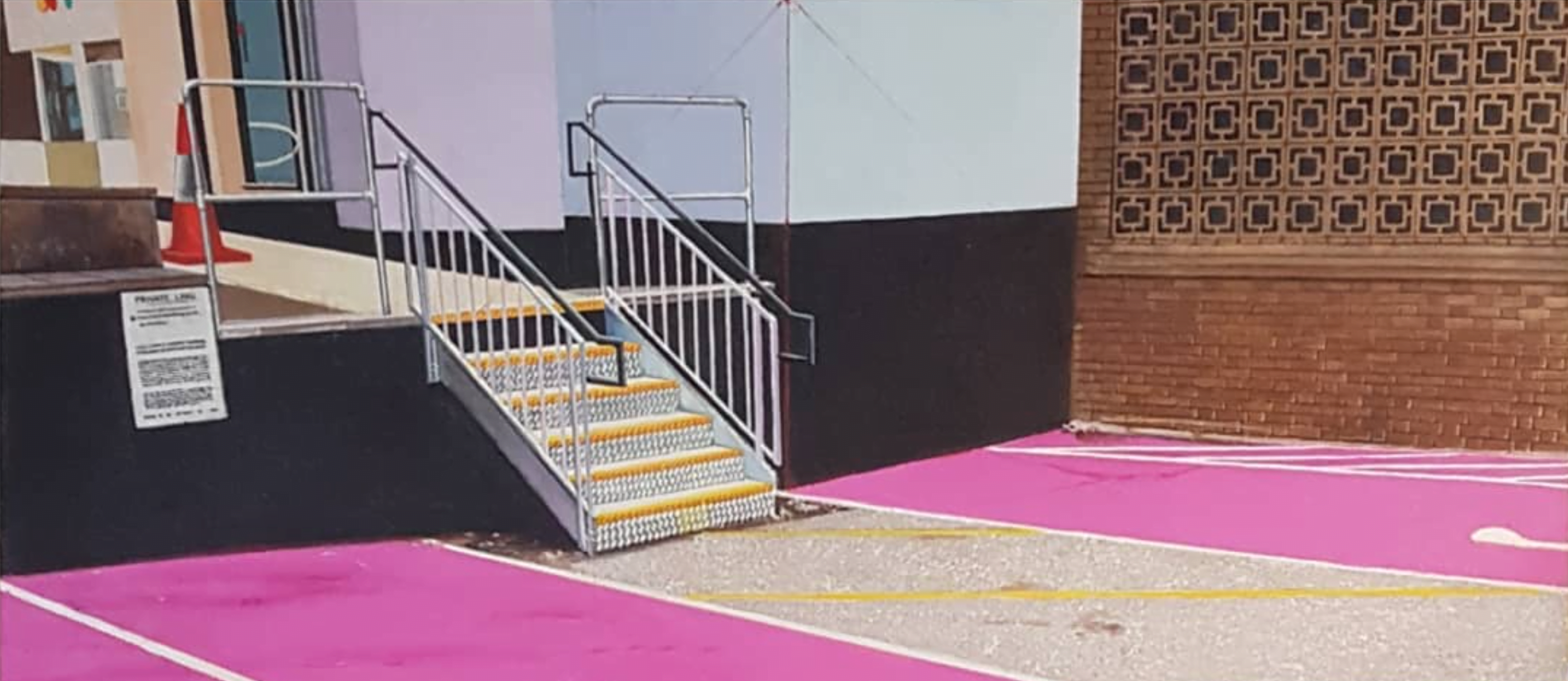
Detail of Car Park LS6.
Court: Hi Howard. This place is fab! I love the high ceilings! How long have you been here and how often do you get into the studio?
Howard: We have lived in our present house for 40 years and first came to Leeds as a student when Leeds University had a four-year degree. As my studio is in my home, I go into my studio almost every day. I find starting a painting is the most difficult part but I have ‘routines’. This can be making and preparing the canvas or starting with compositional drawings from my source material.
Court: Speaking of source material, can you talk a little about your process and how you decide on what you’re going to paint? Do you work from photos or sketches?
Howard: I always work from found situations. The camera on my mobile phone is a perfect tool for me to collect information as I always have it with me. What I find surprises me though, is what I am able to imagine. Sometimes the situations I find myself in have such an impact on me that I see them like signs, or even ‘gifts’ that I can continue to work from. I will develop the photos through compositional drawings and sometimes collaging images together. I try to balance the relationship between the image and the painted surface and texture of the canvas. I love the paintings of Velasquez, which from a distance look like images but as you approach become paint.
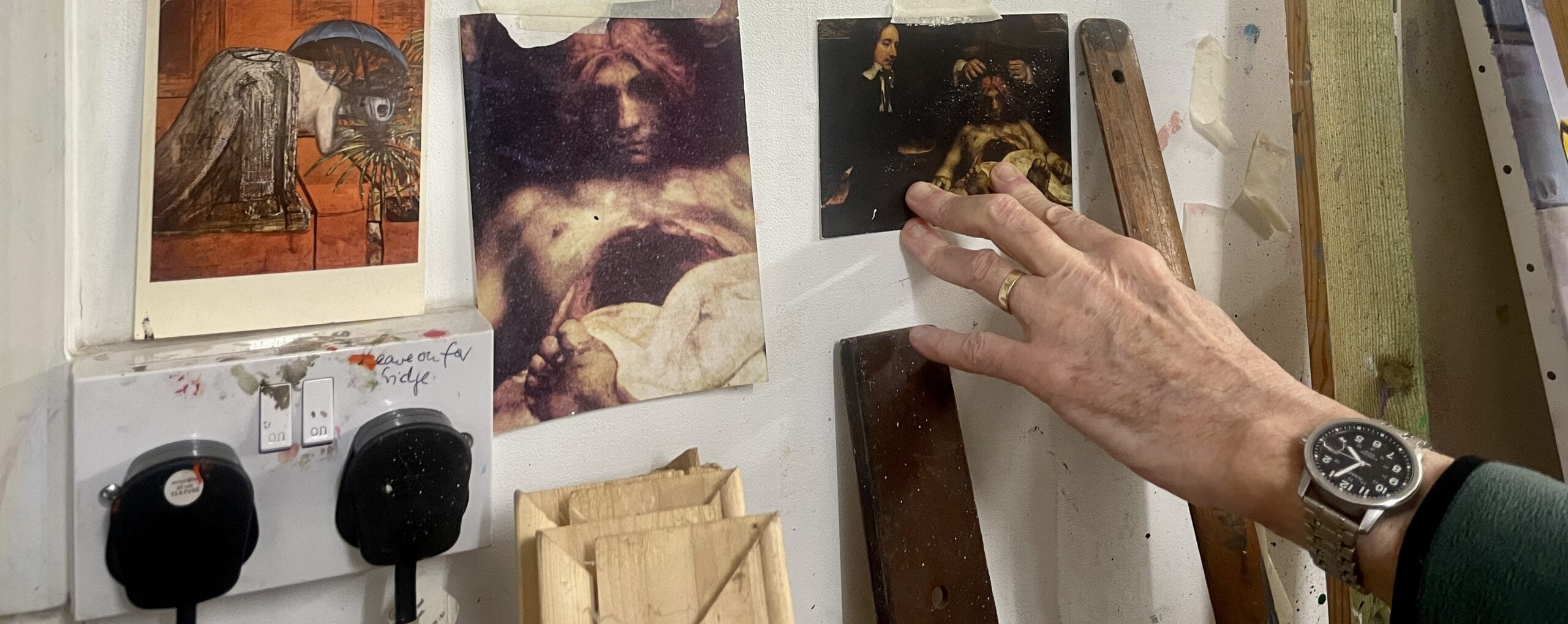
Reproduction images on the studio wall.
Court: Does Art history inform your work? I’ve noticed images by Rembrandt and Bacon on the wall. Are there any key figures or periods that play a significant role in your practice?
Howard: Looking at painting has been vital to me. When I was teaching at Bradford I helped to organise, with other colleagues, study visits for the students. Each year we would have two visits. One week was spent looking at galleries in London and the other week was spent in a foreign capital city such as Paris, Madrid, Berlin, Amsterdam, New York and Barcelona. There is no substitute for seeing work in the flesh. Thinking about the paintings of others, while I am painting, is very important to me and also a significant joy!
I respond to so many painters, it is difficult to pick out one or two. But Piero della Francesca has been important to me for many years, it is his geometry, composition and depth of meaning that has sustained me. I also love Velasquez, Rembrandt and Vermeer.
The other day I went to the Tate Modern to see the Cezanne exhibition. Of the more recent painters I have great respect for Susan Rothenberg and Sigmar Polke. There will be many others, all contribute to the possibility of paint.
Court: Does painting becomes a meditative process for you?
Howard: Painting is a meditation for me. The durational aspect of painting, the time it takes to make a painting is critical to my work. The source material is a catalyst to developing thinking and making. For me painting has to be a meditation on the experience I am having or have had as a human being.
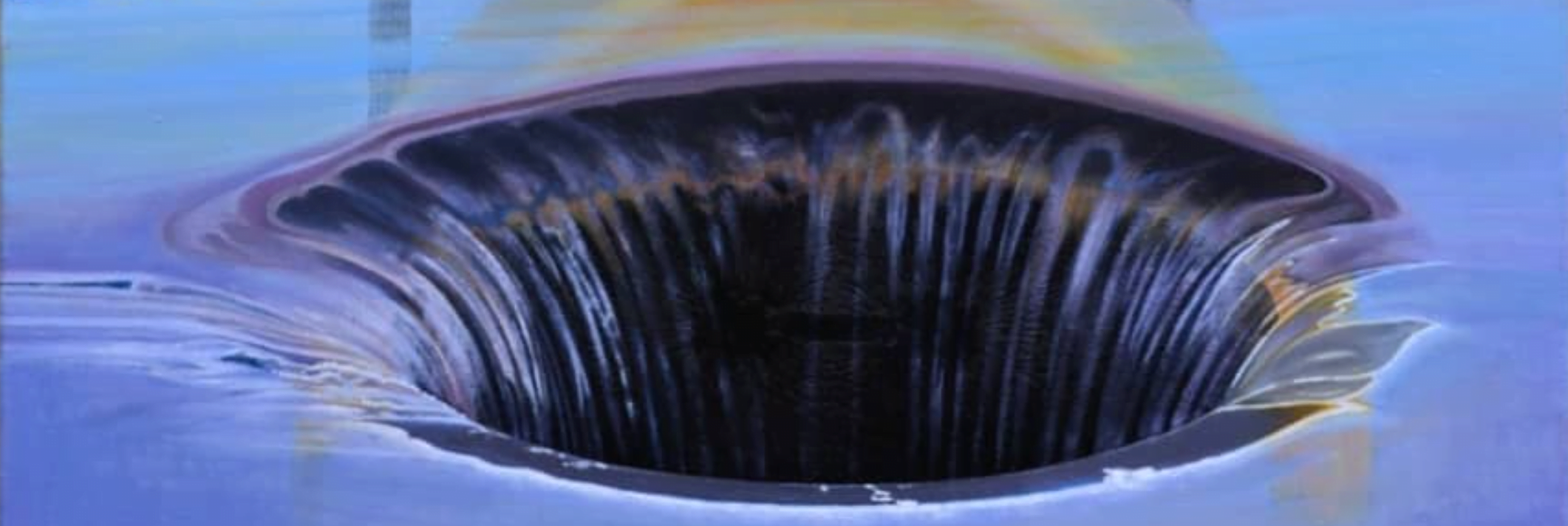
Detail of ‘Journey into Space’.
Court: You’re also interested in science, and this comes through with some of your work. Can you tell us about that?
Howard: Science is superb! I try to engage with the ideas and imagination of science but I am a layman. Sometimes I engage through ‘Science Fiction’ – Neo Rausch‘s paintings fascinate me. I try to follow the debate on what consciousness is. Fortunately, even the scientists are lost and divided on this, so I can engage! I love the idea that consciousness may be elemental to the Universe.
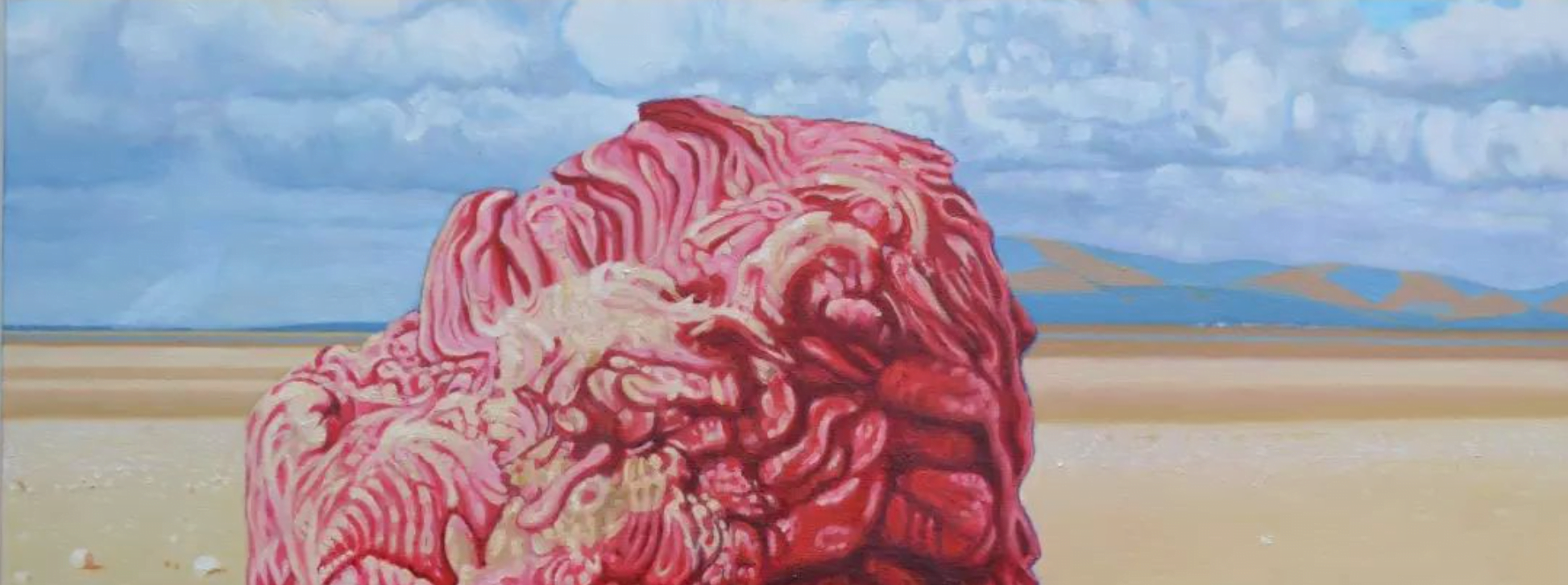
Detail of ‘Jetsam’ in the studio.
Court: Where did you grow up and would you say you’re from a creative family?
Howard: I grew up on Walney Island, off Barrow-in-Furness. My father and grandfather were both engineering draughtsmen, working in shipbuilding. My grandfather, on my mother’s side, was an architectural wood carver. I would say that I came from an artisan background.
Court: And you mentioned that you came to Leeds to for your degree. What did you study?
Howard: I went to a Technical School where I studied engineering drawing. In the newly created sixth form I studied Art, Art History, English Lit and History. I graduated from the Fine Art Special Studies Honours Degree at Leeds University (1967-71).
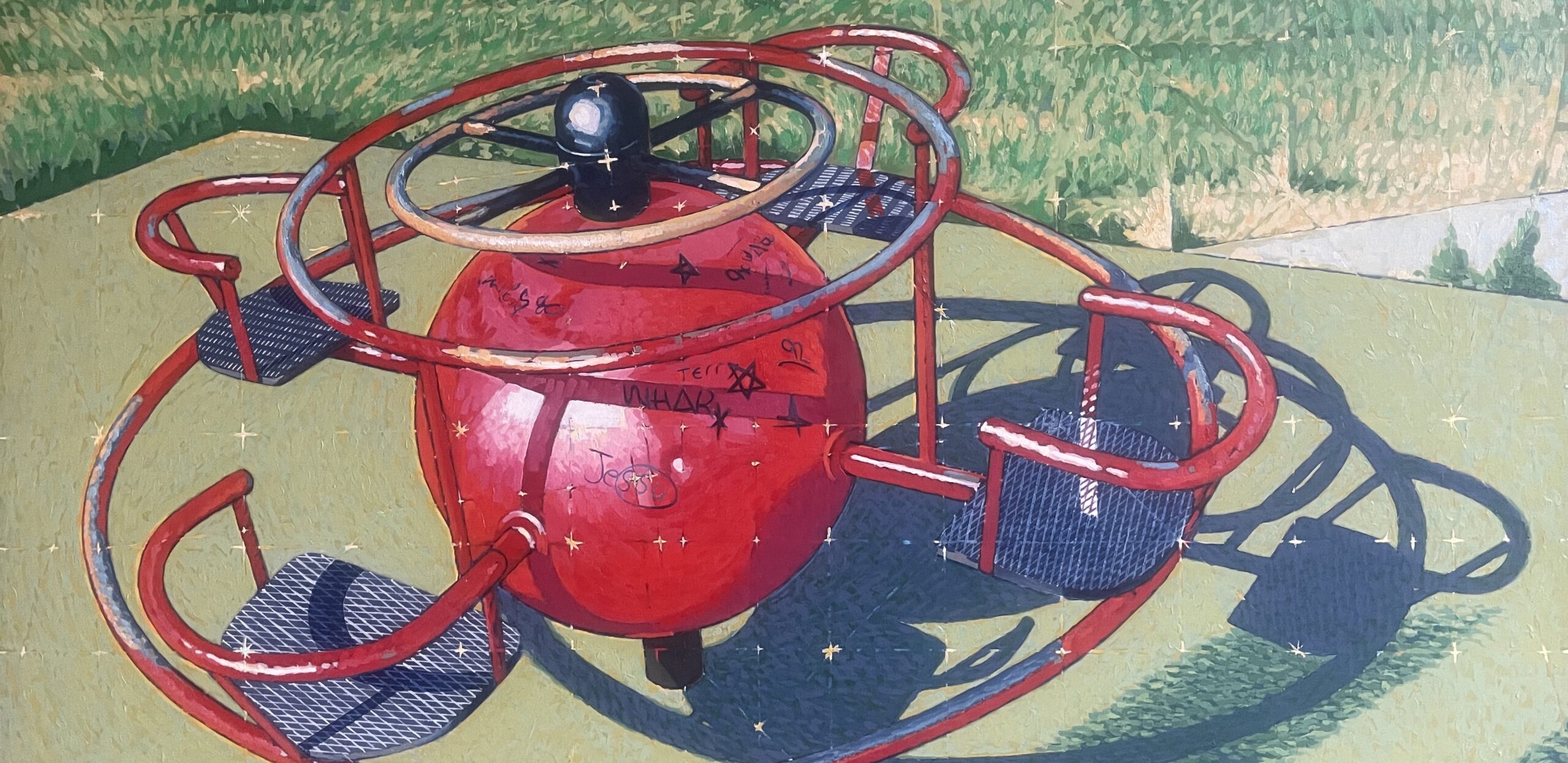
Detail of ‘Orrery’ (1992).
Court: And then you taught at Bradford College. What was that like?
Howard: Teaching Fine Art and Art and Design at Bradford was an exceptional experience for me. I think I was lucky that it was such a rich and rewarding experience. I became Head of the Painting Studio and loved this responsibility. The students were great, very varied and we had an excellent intake of mature students. I would describe our students as a community rather than a cohort. We also had a superb course team, all dedicated to developing the critical and creative practice of our students.
Court: So then taking early retirement must have been a big decision but what a dream to have more time to paint! How have you found it?
Howard: I took early retirement with some sadness. I felt that I still had something to give and I was concerned about letting my colleagues/friends and students down. Our resources were going to be drastically cut and I thought it was best to leave while it was still good. The great thing about being involved in art is that you don’t retire and I have had far more time to paint.
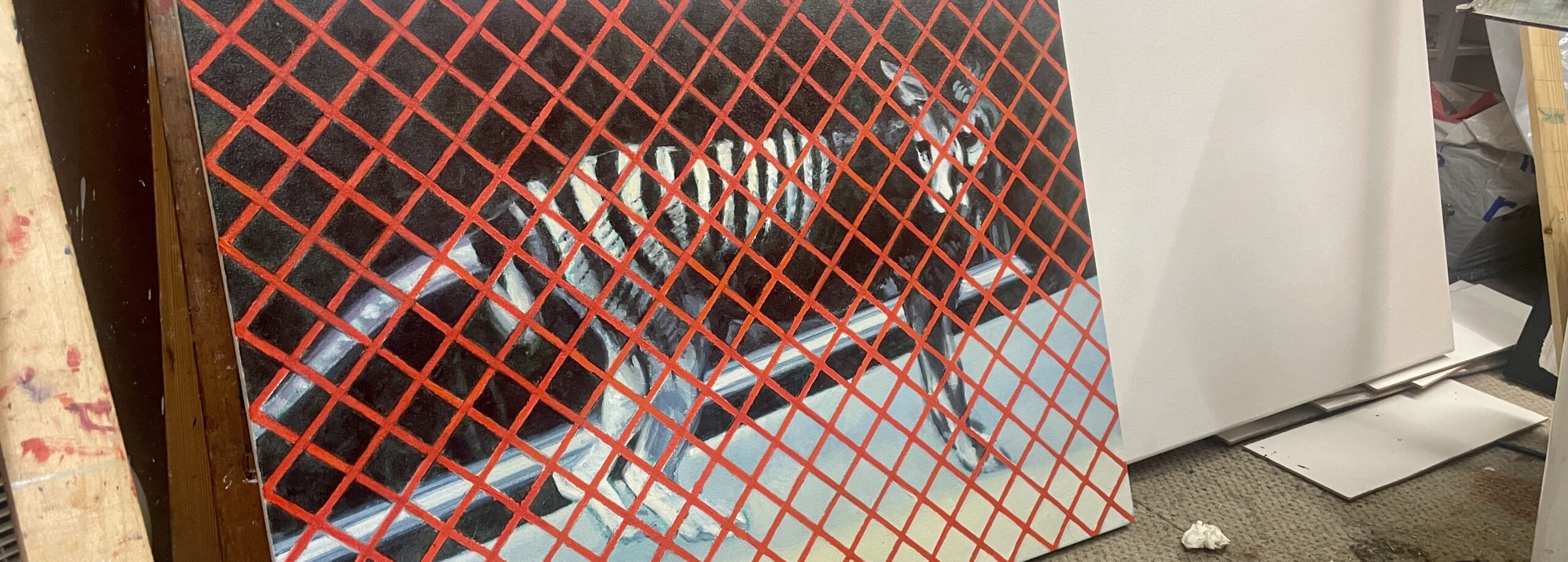
‘Thylacine’ in the studio.
Court: Yeah, that would have been a really awful experience to watch what you and your colleagues had built be hit with those cuts. It makes perfect sense to want to leave on a bit of a high, even if it was a little earlier than ideal! What would you say has been your career highlight to date?
Howard: Relating to my career I can think of two things that have been special to me. One was a party with our students at the Cake Club in Berlin, the last evening and celebration of a study visit. Finding the Cake Club was a bit of a fluke, an informal chance. This was a special moment for me.
Another special occasion was seeing my paintings installed 9A Projects in Todmorden. The work and the space were so beautifully curated by Jon Wood and Matthew Houlding. After retiring I was invited to teach on a new MA in Painting at the University of the Basque Country in Bilbao. This came about through contact with Bilbao through the Erasmus programme. This experience will always remain special! Perhaps above all it is colleagues/friends and students that are the most important.
Court: Do you have a dream project you would love to happen?
Howard: No dream project. I just the hope to make more paintings, to make better paintings, and to reverse Brexit!
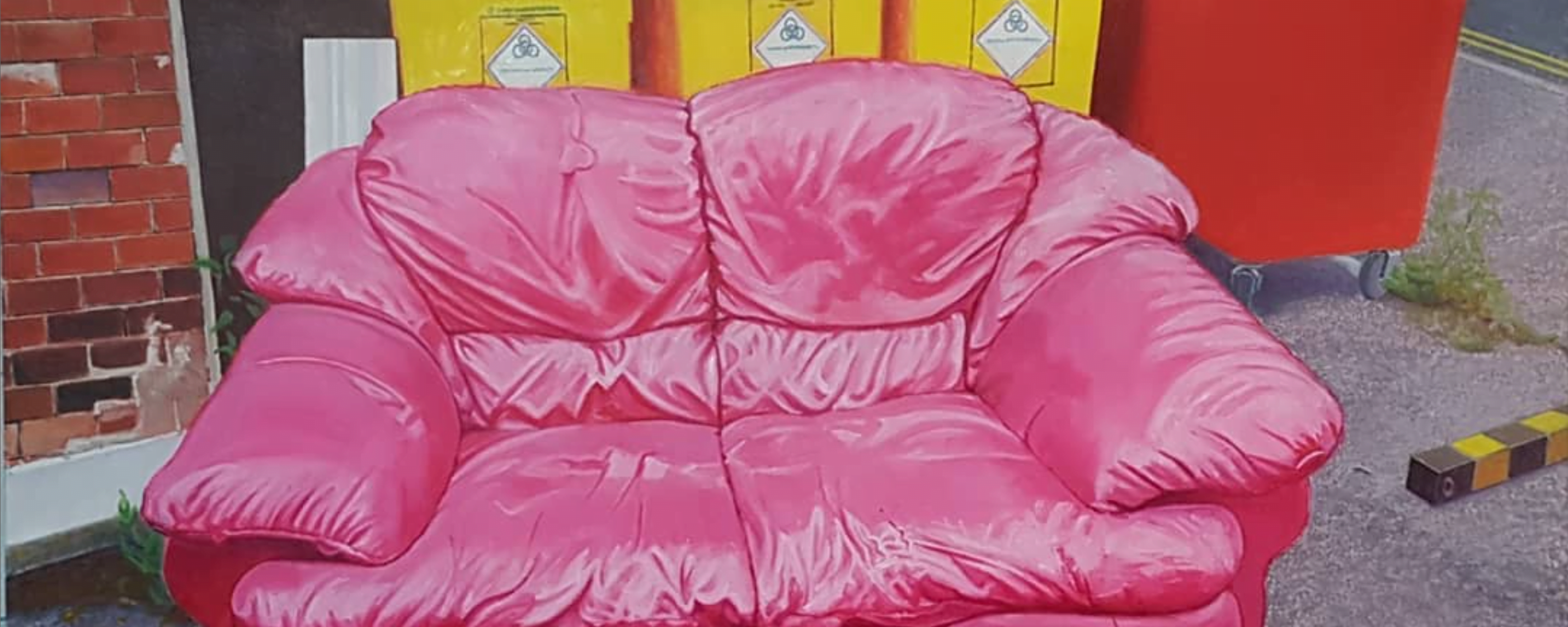
Detail of ‘Pink Sofa, Popular Colours’.
Court: Well, I very much hope you succeed in all of those! Can you tell us a bit about the exhibitions you’ve got coming up?
Howard: I have an exhibition at Hyde Park Art Club called ‘Pink Sofa- Popular Colours‘, 9 Feb – 9 April.
I also have a painting in the Leeds Artists Show at Leeds Art Gallery, 15 Feb – 30 April and I will also be showing work with some great Leeds painters at Northlight.
Court: And what’s the best way for people to keep in touch and see your work?
Howard: It is always best to see work directly so keep an eye out for publicity from Hyde Park Art Club, Leeds Art Gallery and Northlight. I am on Instagram and fortunately I have a unique name! Just go to @howardeaglestone!
Court: Fabulous! Thank you so much for your time. It’s been an absolute pleasure to spend the afternoon snooping through your studio.
Filed under: Art & Photography
Tagged with: art, art history, artist, consciousness, creative, creativity, cuts, history, image, leeds, meditation, painter, painting, teacher, teaching, technique, texture, traditional, university
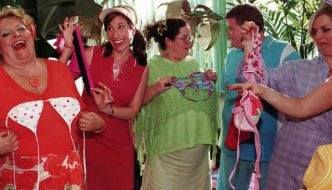
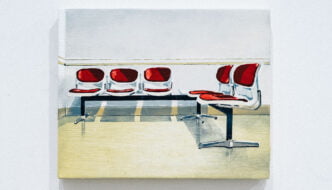
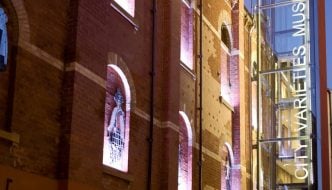
Comments